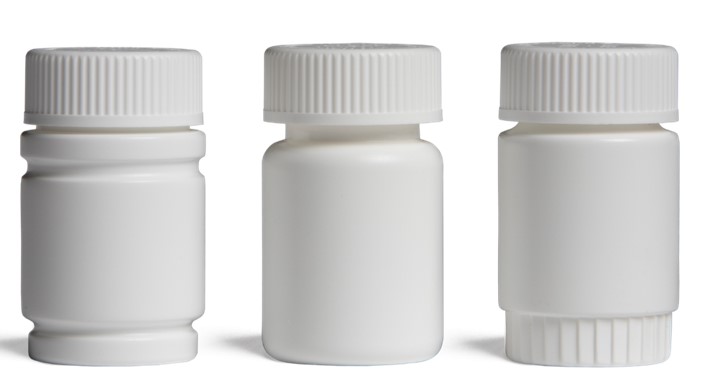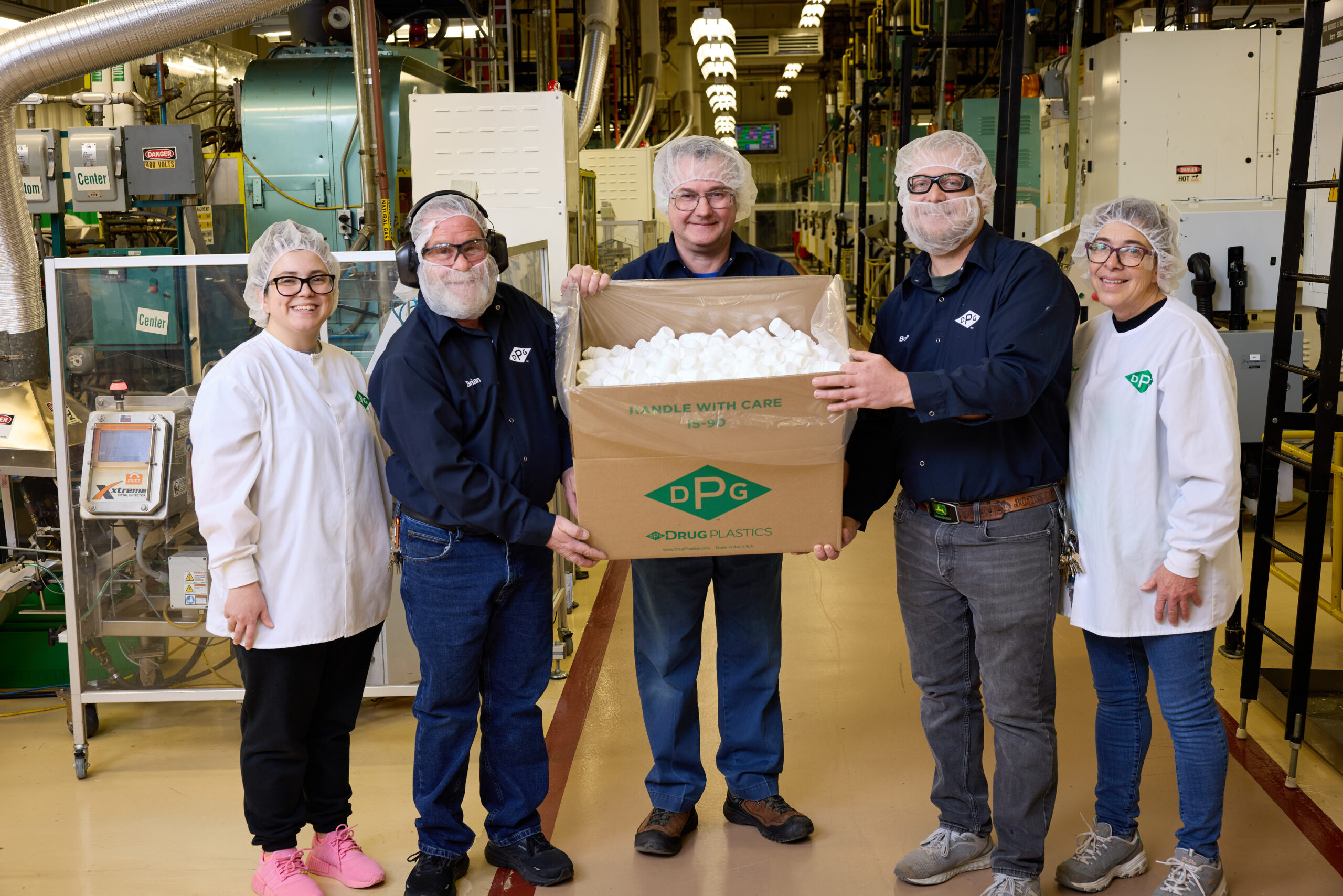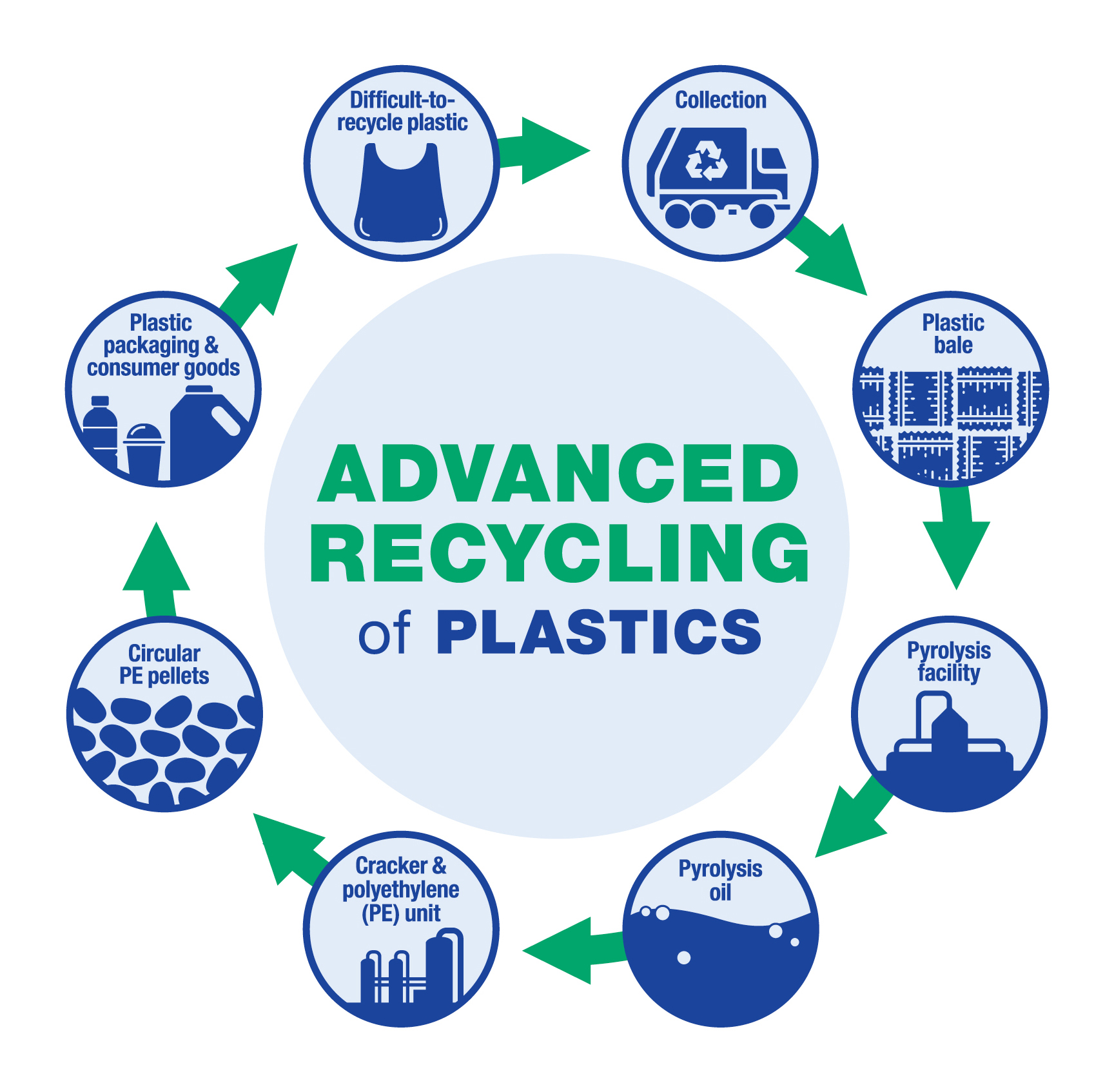Imagine a world where post-consumer plastic did not have to be placed in a landfill or incinerated. Imagine if all the negative environmental impacts associated with landfilling and incineration, such as contamination from leaching, ingestion of microplastics, and increased carbon emissions, could be virtually eliminated…forever.
Additionally, wouldn’t it be a better planet if the amount of fossil fuels needed to supply the world with plastics were also reduced? This type of future is possible. In fact, we are now in the early stages of plastic manufacturing technology that will soon take us to an even better, cleaner, and healthier future for the environment.
Emerging Technology
Advanced Recycling is the emerging sustainable method to obtain ethylene molecules needed to produce polyethylene. Identical ethylene molecules are generated with post-consumer waste and several other feedstocks (specific chemical ingredients).
Traditionally, resin manufacturers use fossil fuels to create the primary feedstocks for plastic resin production. They produce ethylene by obtaining Ethane from natural gas or Naphtha from crude oil. For polyethylene production, the feedstock is a double hydrocarbon molecule called ethylene.
Plastic resins are made of molecules containing many repeating carbon units called polymers. These long chain molecule formations give plastics many qualities that make it so versatile, like flexibility, malleability, and strength.
In addition, the Advanced Recycling process ensures that the resulting virgin resin is identical to virgin resin produced with fossil fuels, like oil and natural gas. Like virgin resin, resin produced through the Advanced Recycling process is free from foreign material and other contaminants.
One key benefit is that it offers a solution to transform difficult-to-recycle plastic waste into molecular feedstocks that create virgin plastics. These plastics include polyethylene, polypropylene, polystyrene, PET, and more.
Chemical Structure
Plastic resins are made of polymers: molecules containing many repeating hydrocarbon units. The plastic resin manufacturing process first subjects oil and natural gas feedstocks to “cracking“ – a heat-intensive process which purifies ethane and changes it to ethylene. The ethylene is then subjected to chemical reactions that grow the number of carbon atoms until the correct length polyethylene polymer is formed.
The refinement process subjects the ethane or naphtha to a heat-intensive process called “cracking” that produces ethylene. The ethylene is subjected to chemical reactions, growing the number of carbon atoms each molecule possesses until the correct length polymer is formed. Plastics made from fossil feedstocks are often called synthetic plastics.
Producing Pyrolysis Oil
In the Advanced Recycling process, post-consumer plastic waste and biomass are heated in a non-combustible, oxygen-free pyrolysis process. The pyrolysis process is the key to obtaining ethylene molecules from post-consumer waste. This produces pyrolysis oil.
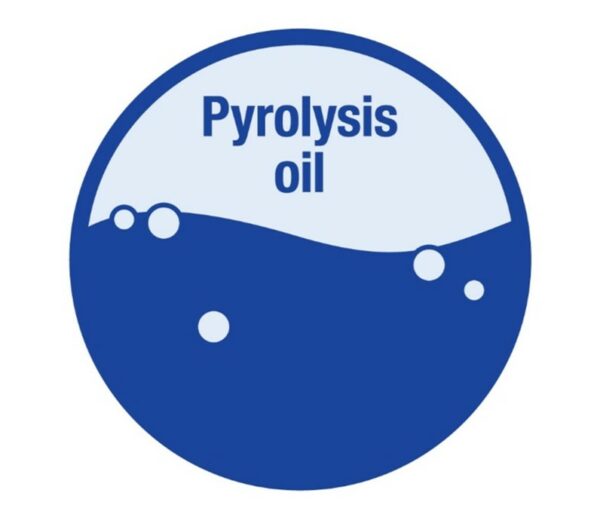
Pyrolysis oil is then processed through the same reactors as natural gas and crude oil, producing the same ethylene molecules. The ethylene molecules from all sources create the virgin resin. Essentially, virgin resin can be made by using molecules derived from post-consumer plastic waste. Transforming difficult-to-recycle plastic waste into molecular feedstocks used to create virgin resin is a key benefit of Advanced Recycling. Those plastics include polyethylene, polypropylene, polystyrene, PET, and more.
The ethylene created through this process is indistinguishable from fossil or bio-based ethylene, since it has the exact same molecular composition. Similarly, the polyethylene resin produced from these molecules is identical to virgin resin created through fossil or bio-based ethylene.
Pyrolysis is not a new technology: because of the tremendous potential to create an absolute circular recycling model, companies have begun investing in building the infrastructure to support large-scale pyrolysis production. Pyrolysis reactors are coming on-line with plans to create billions of pounds of plastic within the next 5 to 10 years. Pyrolysis oil offers us a pathway to a sustainable solution that could potentially eliminate plastic waste from the environment.
Sustainability Benefits
Resin selection is an important step in the product packaging design process. There are major differences between resin produced through Advanced Recycling, Mechanical Recycling, and renewable Bio-Material.
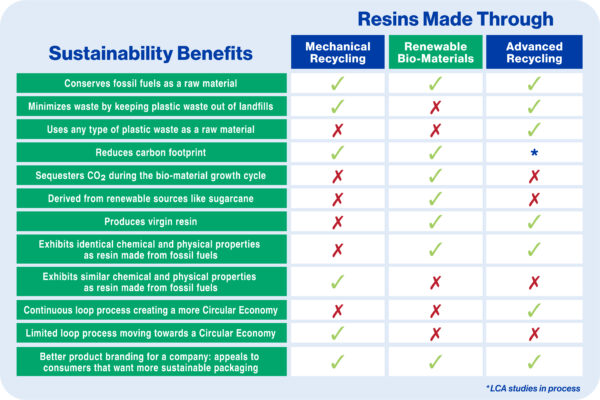 Resin made through Advanced Recycling has numerous advantages for increased sustainability. If you are looking for virgin resin that keeps plastic out of landfills and helps to create a more Circular Economy, then switching to resin produced through the Advanced Recycling process may be the right choice.
Resin made through Advanced Recycling has numerous advantages for increased sustainability. If you are looking for virgin resin that keeps plastic out of landfills and helps to create a more Circular Economy, then switching to resin produced through the Advanced Recycling process may be the right choice.
Mass Balancing For Feedstock Accounting
At this time, production of virgin polyethylene resin can use fossil fuels, bio-materials, or pyrolysis oil feedstocks. Each batch of polyethylene can vary in the amount of ethylene derived from these sources. Currently, the vast majority of polyethylene resin produced is from 100% fossil fuel feedstocks. However, there are a limited number of resins made from 100% bio-materials on the market in low quantities. Mass Balancing is an accounting technique that is used to manage the feedstock content. Mass Balancing has been used for years in the energy sector to account for solar, wind, hydro, and fossil feedstocks for energy production.
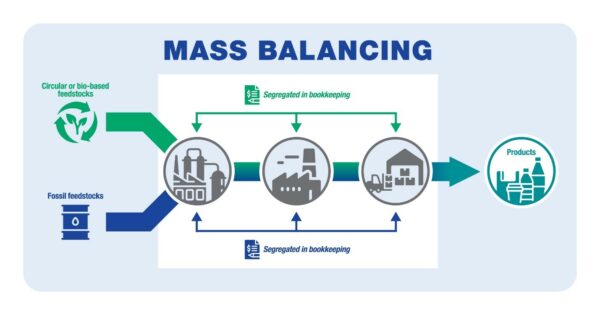 The Mass Balancing method for polyethylene resin allows Drug Plastics to purchase certificates indicating a specific amount of pounds that are being supported. Customers can purchase certificates for the number of pounds they choose to support. In addition, customers can claim the use of recycled material for designated products up to the amount of certificate pounds that were purchased.
The Mass Balancing method for polyethylene resin allows Drug Plastics to purchase certificates indicating a specific amount of pounds that are being supported. Customers can purchase certificates for the number of pounds they choose to support. In addition, customers can claim the use of recycled material for designated products up to the amount of certificate pounds that were purchased.
It is a certification trail that allows companies to accurately and consistently claim how much of the resin content is bio-based or recycled-based. Mass Balancing identifies how much of the content comes from each source. The eventual goal is that the majority of molecules, and the resultant plastic resins, are sustainably created through this Circular Economy.
Certification Organizations
Several organizations are leading the effort to certify the amount of recycled and bio-based materials in the Mass Balancing model. One organization overseeing widespread global adoption is The ISCC System GmbH in Cologne, Germany. For each batch of resin sold, the resin purchaser receives a Sustainability Declaration and credits.
The Sustainability Declaration contains the circular or recycled content claim. The credits communicate how many pounds or metric tons of the resin produced using recycled or bio-based materials. This system serves the dual purpose of assuring resin producers provide accurate information, and validating the quantity of recycled and bio-based materials. Learn more about the International Sustainability and Carbon Certification at www.iscc-system.org.
We Can Help
Sustainability is important to us. In fact, that’s why we established tools, manufacturing options, and offer suggestions to help our customers create more environmentally friendly plastic packaging. We can demonstrate how Advanced Recycling positively affects the environment, lessens reliance on fossil fuels, and reduces the amount of plastic waste going into landfills.
Is sustainable packaging on your radar? Call 610-367-5000 to speak with a representative.
